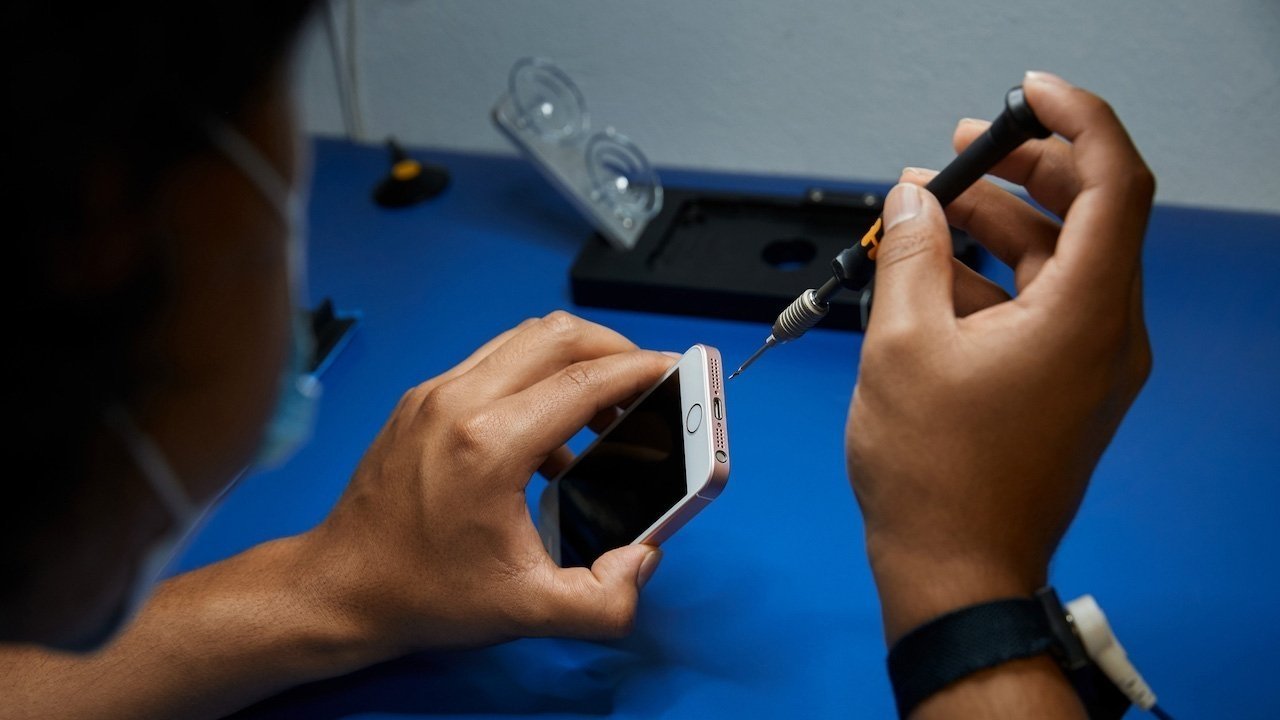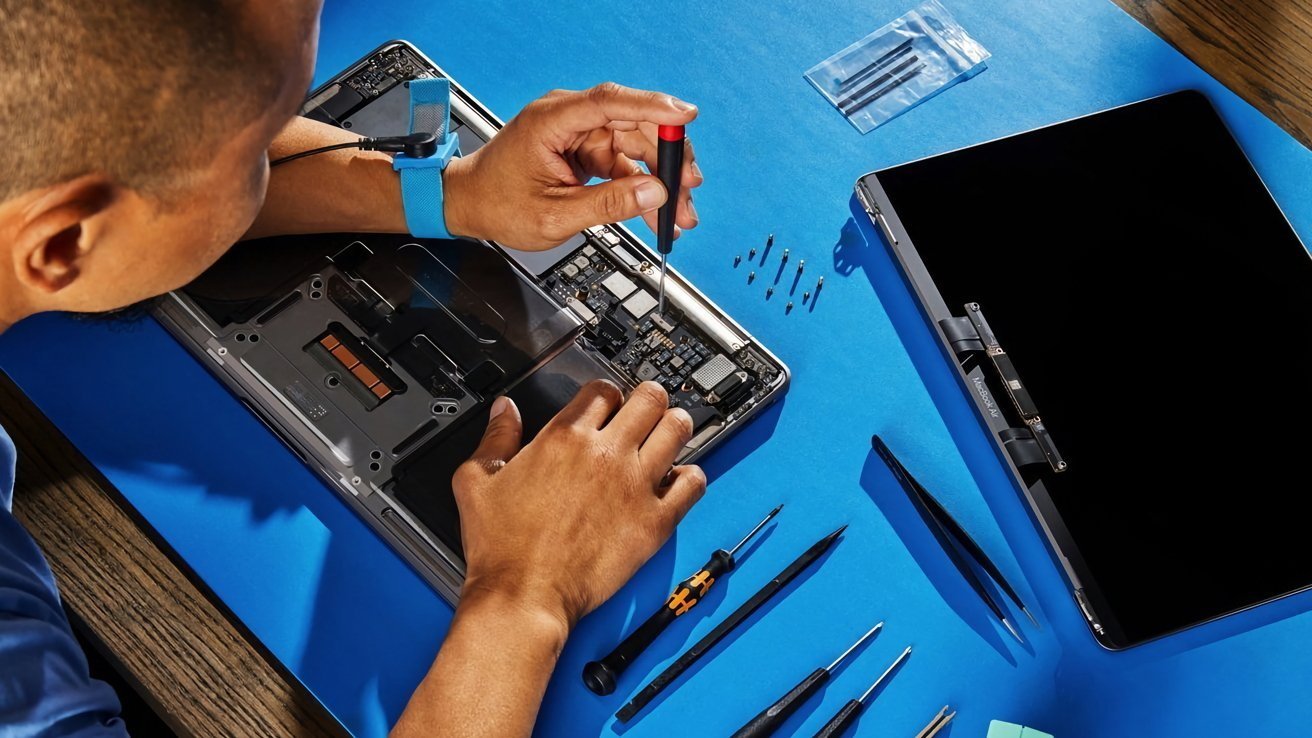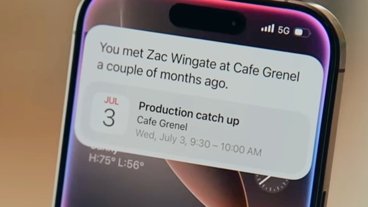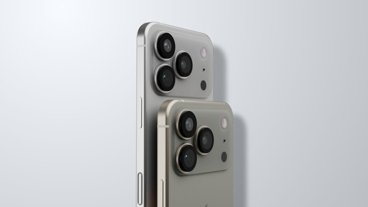Apple has published its list of principles it follows in product design to keep items like the iPhone durable, while simultaneously balancing the need for repairability.
Apple has frequently been praised for the designs of its products, ranging from the iPhone to the MacBook Pro. It has created quite a few iconic items in its history, with it relying on teams following the same design ethos.
In a document titled "Longevity, by Design" published in June, Apple offers what it works towards when it creates its hardware. It also discusses what can and should happen after said hardware gets into consumer hands.
Approach to longevity
The 24-page document, including cover and sourcing pages, goes over quite a few areas, but starts off by insisting Apple is working to create the "best experience" for customers.
"Designing for longevity is a company-wide effort, informing our earliest decisions long before the first prototype is built and guided by historical customer-use data and predictions on future usage," it states.
This requires Apple to constantly consider the balance durability, design aspects, and repairability, while maintaining safety, security, and privacy.
"Our approach is working. Apple leads the industry in longevity as measured by the value of our secondhand products, increasing product lifespans, and decreasing service rates."
As evidence of this, the document points out that the value of its iPhone on the second-hand market is at least 40% more compared to Android devices. That valuation also increases with the age of the iPhone.
The lifespan of the iPhone is also continuing to grow. Hundreds of millions of iPhones have been in use for more than five years, it claims.
As for service rates, newer devices are apparently less likely to require repairs than older ones. Out of warranty repairs from 2015 to 2022 were down 38%, with accidental damage repairs for iPhone down 44% since the iPhone 7.
Liquid damage repairs also went down 75% with ingress protection in the iPhone 7.
Apple goes on to spotlight its reliability testing, which it says is used to accompany the design process. Reliability is "intrinsically part of the entire product development life cycle," the document states.
It also covers ways Apple tests its products, some of which were raised in May on social media.
Operating system support is also "a key pillar of product longevity," thanks to security updates and bug fixes. Support for operating systems "extend well beyond the historic industry norm," with up to six years of support from the device's original release.
Principles on repairability
Apple's hardware is often criticized for being hard to repair, but it has been something that it has been trying hard to fix. While it still suffers from criticism over parts pairing, Apple does try to appease electronics enthusiasts who want to repair their own hardware by sending out self-sevice repair kits.
Part of this is caused by the way Apple designs its products in the first place.
"Apple strives to improve the longevity of devices by following a set of design principles that help resolve tensions between repairability and other important factors," the document reads. This includes the impact to the environment, access to repair services, preserving safety and security, and enabling transparency in repair.
Apple insists that while it designs products for everyday use and minimizing repairs, it has to design in the possibility for repair, while maintaining durability. This is said to excuse its use of advanced adhesives to secure batteries, which can also be released when pulled in a specific direction.
The iPhone 16 is said to be the most repairable ever with 11 key modules.
The first principle is Environmental Impact, which includes Apple's carbon neutral goals, and using more recycled and renewed materials. It believes that prioritizing product longevity instead of repairability create "meaningful reductions in environmental impact."
Access to Repair Services is the second principle, be it from Apple itself, third-party repair outfits, or via the consumer's own effort. Apple has doubled the size of its service and repair network in the last five years.
The company also says that it is committed to supporting third-party repair services and repair tools.
Safety, Security, and Privacy
Principle three is Safety, Security, and Privacy, which touches upon touchstones of the Apple ethos. A user's privacy should not be compromised during or after a repair, it states.
The section explains that there's the use of cloud-based diagnostic systems that reduce the need for requests for customer passwords by support staff.
It also discusses biometric security, and the ned to maintain it to a high level. Due to the potential risks involved, Apple justifies its its use of genuine Apple parts for repairs.
Transparency in Repair
The fourth principle is Transparency in Repair. Customers have the right to know that repairs of crucial parts were performed using Apple-sourced parts.
Repairers in Apple's IRP network can offer third-party parts alongside genuine Apple parts. However, Apple will disable a third-party part in cases involving Face ID or Touch ID sensors.
The document then goes on to discuss parts sourcing and the use of third-party parts in repairs.
The road ahead
Using data and its commitments to guide its production, Apple aims to ensure products "exceed expectations" on durability and perofrmance.
"This journey is one that will never be over, because as materials, testing, and technology advance, so too will the ways that we use them to make our products stand the test of time." It reexplains that this means durable and reliable products, which are also repairable with privacy and transparency in mind.
"That's our commitment to our customers, to future generations, and to the planet we call home."
 Malcolm Owen
Malcolm Owen










-m.jpg)






 Chip Loder
Chip Loder
 Mike Wuerthele
Mike Wuerthele


 Amber Neely
Amber Neely
 William Gallagher
William Gallagher



-m.jpg)





8 Comments
"
*Chief among "other important factors" are profit and maintaining a closed ecosystem*
"
"
I don't believe Apple is prioritizing reapairablitity or the right to repair in any meaningful way - just barely enough to keep the EU off its back and that's it. The amount of e-wate created by too-expensive-to-repair Apple products is staggering.
By keeping a stranglehold on parts, locking sets of parts to a single device, requiring expensive repair tools and severely restricting the ability to perform after market upgrades (soldered RAM and soldered or proprietary SSDs) Apple is driving consumers to expensive AppleCare or even more expensive new products while driving down the aftermarket value of their products. Apple is cynically creating prematurely obsolete e-waste with their design choices.
I value security in my iPhone far above repairability and longevity (and everything else). My iPhone has access to all of my info (financial, personal, political, etc, etc). I believe that many in the "Right to Repair" actually are trying to weaken security/privacy rather than for their stated reasons. I expect my iPhone to last 3-4 years before replacement, and have been delighted to get 5+ years lifespan.
This "Right to Repair" is largely nonsense, and conversely, what Apple says largely makes sense.
For every person that beats their chest that they want to repair their own iPhone, there are likely 50,000 people or more who could give a shit. Making a product "easy to access" for the consumer defeats many of the shock, water and security protections a highly engineered and manufactured product provides.
Owning the product does not necessarily mean you have also purchased the right to repair it either. As a consumer, you can evaluates how important that aspect of a purchase is to you, and either buy or pass on a product based on it level or repairability.
This is another facet of the attacks on Apple and other companies to "open" their systems (ie: app stores, payment systems). These products (a company' HW,, SW, services, and integration) the company's solution. It's the company's IP! They can do with it what they wish (within the law) and consumers can decide if their approach is "too restrictive" or not in whatever category concerns them. It's not anti-competitive to do any of this. This is the nature of market competition.
Why would Nordstroms or Mark's and Spencer allow an independent retailer to set up a kiosk in their store, for free; to sell products and collect 100% of the revenue for themselves, all while leveraging the enormous costs of the retail space (rent, utilities, insurance, security, marketing and advertising etc.) AND the traffic the stores themselves drive. Again, for free.
What I've always said is please show me extensive evidence that Apple (or other companies of their market position) use that market strength/position to coerce or otherwise influence component suppliers, service suppliers, reseller channels etc. to unfairly impinge or restrict the supply or sale of competitors product because of threats or other non-free market tactics. I'm not saying it doesn't happen, but at least for Apple, I rarely if ever see this, and certainly not at a level that would warrant government-level intervention.